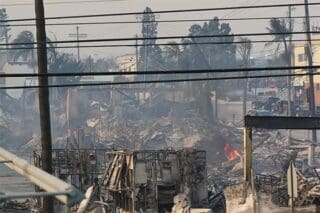
The term “asbestos hands” has been circulating online lately. Given the dangers of asbestos, the term may give cause for concern. After all, asbestos exposure can lead to mesothelioma and other asbestos cancers.
In this case, however, the truth is harmless. Let’s break down what asbestos hands are — and what to watch out for if you’ve actually been exposed to asbestos.
Asbestos Hands Meaning
“Asbestos hands” is a tongue-in-cheek term often used to describe chefs. It refers to their increased tolerance for extreme heat. The theory goes, after so much heat exposure over the years, they build up a resistance to it. For example, they may handle a boiling hot pot with their bare hands, seemingly without issue. But how did this phenomenon get its name?
“Anthony Bourdain’s hands are like scorched asbestos—skin gloves that comfortably clutch Promethean heights of centigrade.”
Elliot David
Flaunt
Asbestos is a mineral known for its durability and resistance to heat. For these reasons, it was commonly used in construction and fireproofing for many decades. So to have “asbestos hands” is to have hands resistant to heat.
The Reality of Asbestos
While “asbestos hands” may be tongue-in-cheek, asbestos is not. Long-term exposure to asbestos can cause serious illnesses, including cancer.
Many asbestos products exist in older buildings and homes. In general, they pose little risk as long as they are intact. But if these materials are disturbed, they can release asbestos fibers into the air.
Once inhaled or ingested, the fibers can embed in the lining around the lungs and other tissues. Over time, asbestos causes irritation, scarring and even cancer in some people. Asbestos is the only confirmed cause of malignant mesothelioma.
Mesothelioma may present many different symptoms, including abdominal or chest pain, coughing, fatigue and fluid buildup. To be clear, “asbestos hands” is not one of them.
Asbestos Regulations
Many countries have banned asbestos outright because of its risks to human health. The United States is not among them.
Regulators started limiting asbestos use in the 1970s. Most recently, the United States Environmental Protection Agency (EPA) banned ongoing uses of chrysotile asbestos. However, different industries have various deadlines for when they need to cease and desist. Plus, the rule excludes other asbestos types. The EPA may have taken a step in the right direction, but we have more steps to take for a full ban.
Exposure Risks Today
Even with a mix of federal and state protections, many Americans remain at risk for asbestos exposure and related illnesses. This is especially true because asbestos exposure doesn’t immediately result in health problems. Mesothelioma may take decades to develop.
As a result, historic asbestos use still has consequences today:
- Many companies exposed their employees to asbestos. Common at-risk occupations include veterans, construction workers and shipyard workers.
- Workers’ families can also develop mesothelioma because of secondary asbestos exposure.
- Buildings constructed before the 1970s are at a higher risk for asbestos-containing products. Remodeling and demolition can put those nearby in danger.
If you or someone you know was exposed to asbestos, treatment and legal options are available. But your local chef with “asbestos hands” doesn’t necessarily need to explore any of them.




